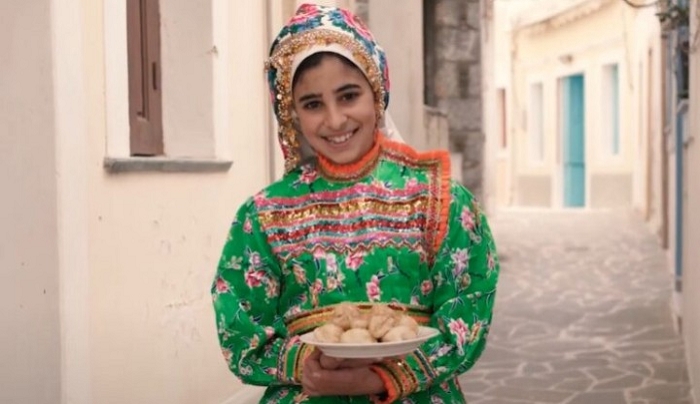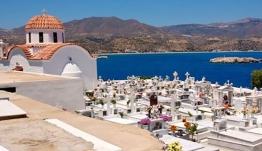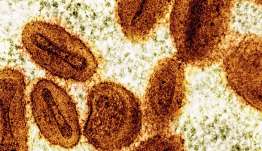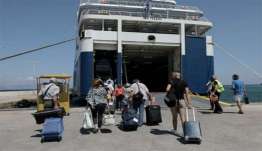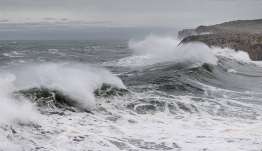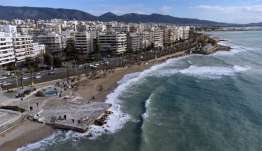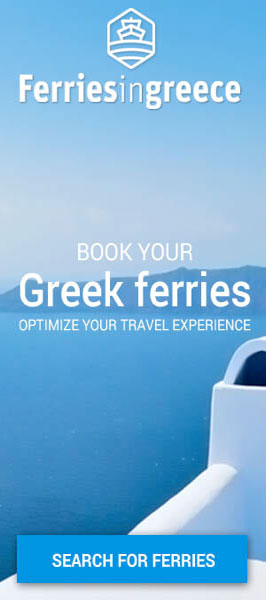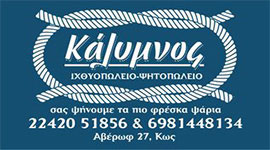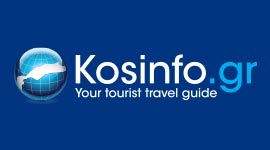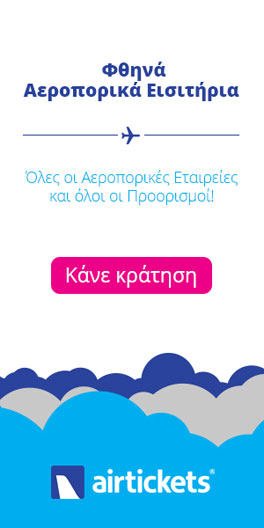Καλογραμμένο και με εξαιρετικό ενδιαφέρον άρθρο για την Κάρπαθο από το national geographic
Με τίτλο”Μπορούν οι κρυμμένοι θησαυροί αυτού του ελληνικού νησιού να δελεάσουν τους ταξιδιώτες;” κυκλοφόρησε στην σελίδα του διάσημου national geographic ένα άρθρο που παρουσιάζει εξαιρετικό ενδιαφέρον.
Η Κάρπαθος, που παραβλέπεται ακόμη και από τους Έλληνες ταξιδιώτες, εξισορροπεί τον ανερχόμενο τουρισμό με τη διατήρηση των αρχαίων παραδόσεων της, αναφέρει στον υπέρτιτλο η δημοσιογράφος FAHRINISA CAMPANA, που ταξίδεψε στο νησί μαζί με τον ταλαντούχο φωτογράφο BYCIRIL JAZBEC.
Στο άρθρο, πέρα από το τουριστικό ενδιαφέρον, γίνεται μια ουσιαστική προσέγγιση στο ζήτημα της οικολογίας και των μεγάλων δυνατοτήτων, αλλά και των προβλημάτων που αντιμετωπίζει το νησί. Οδηγός στο άρθρο η κα Μαρίνα Αγαπίου εργάζεται και προσφέρει στονβ τομέα του τουρισμού και η οποία ανάμεσα στα άλλα αναφέρει:
«Στα αγγλικά, ο ορισμός του «eco» είναι «οικολογικός»», λέει η κα Αγαπίου. «Οικός στην ελληνική γλώσσα σημαίνει το σπίτι, τη γη, την κοινότητα. Οπότε, αυτό είναι οικοτουρισμός—να φέρεις ανθρώπους κοντά.
Επίσης η κα Αγαπίου επισημαίνει ότι υπάρχουν θέματα με το νερό αλλά και με την διαχείριση των σκουπιδιών που αυξάνονται ιδιαίτερα τους καλοκαιρινούς μήνες.
Διαβάστε το καλογραμμένο και εξαιρετικού ενδιαφέροντος άρθρο από το national geographic:
Can this Greek island’s hidden treasures lure travelers?
Karpathos, overlooked even by Greek travelers, balances rising tourism with sustaining its ancient traditions.
PHOTOGRAPHS BYCIRIL JAZBEC
BY FAHRINISA CAMPANΑ
Rolling her sleeves up past her elbows and tying a full-length apron around her waist, Evangelia Agapiou is ready for her next cooking class. Today, she’s making makarounes, the traditional pasta of Karpathos, a Greek island in the Aegean Sea halfway between Crete and Rhodes. There are only two ingredients in these inch-long curly shells: flour and water. But there’s a whole lot of work—and history—behind what makes them so special.
Which is exactly what Agapiou wants to show the island’s visitors. “Many people think that pasta comes from the Italian occupation, but we had makarounes long before the Italians arrived,” she explains. Italy first invaded Karpathos in 1912, occupying the island for nearly four decades.
Speaking to a small group of travelers, Agapiou peppers her cooking instructions with a history of the island, its traditions, and the locals’ deep connection to the land and sea.
Top: Young women dress in traditional outfits for the May celebration of Saint Irene in the village of Olympos, also known as Olymbos.
Bottom: A secluded church perched on a cliffside near Olympos overlooks the Aegean Sea.
Hidden coves scallop the quiet northeast coast of Karpathos, the second largest island in the Dodecanese archipelago which includes t…Read More
Despite being the second largest island in the Dodecanese after Rhodes, there’s an acute feeling of disconnectedness on Karpathos. The ferry from Athens takes 28 hours, and although Karpathos has an international airport, there are direct flights from only a handful of countries, such as Italy, the Netherlands, and Belgium.
Karpathians have also managed to maintain a deep sense of self-sufficiency and independence, especially on the northern side of the island where most families still take up farming and shepherding to survive. In many households, cheese and butter is made with milk from their sheep and goats, and it’s not uncommon for families to produce their own honey, wine, and olive oil.
(This is what you need to know about Greece’s first underwater museum.)
But things are changing on the island. In recent years, Karpathos has experienced a steady increase of tourists who are looking for a more off-the-beaten-path experience and to avoid the large crowds on more popular islands. This has brought palpable financial benefit to the island, but a host of other problems along with it—the scarcity of natural drinking water and the increasing need for a proper recycling facility, to name but two.
An ancient cliffside path from the Karpathian village of Avlona leads to this cave in the ruins of Vrykounda, a town that was inhabited until the sixth c.
While exploring Olympos’s narrow lanes, visitors will find artisan handicrafts for sale and outdoor cafés for dining on local foods such as makarounes…
Compared to tourist hot spots such as Mykonos and Santorini, islands that have long struggled with issues like proper waste management and potable drinking water, Karpathos has one advantage: its late arrival to the tourism industry. This has given the locals time to examine what’s been happening on other islands, which, says Agapiou, has helped them “avoid many problems and not focus on mass tourism like it’s the only solution.”
The rising tide of tourism
Until recently, Karpathos’ only summer visitors were the children and grandchildren of locals who had moved abroad to America from the 1950s to ’70s and who would spend their summer months visiting relatives.
In 2016, Agapiou founded Ecotourism Karpathos, when she realized that the island, still under-the-radar for even most Greeks, was starting to see more tourists during the summer months. They were specifically interested in outdoor activities—wind surfing, trekking, and bird watching—as well as local Karpathian traditions, such as the annual Easter celebration when locals don colorful traditional clothing.
Agapiou provides opportunities ranging from trekking tours that include a beach cleanup to stays in solar-powered accommodations.
“My vision is to help people here in Karpathos—which isn’t a touristic island like Mykonos, Santorini, Crete, or Rhodes—see a different side of tourism,” she explains. “I saw how, in 10 years, our society changed because of mass tourism, how our traditions have been lost now.”
A hike up the Profitis Ilias mountain rewards visitors with views of the coast and access to an enchanting white church at the peak.
Another problem is the very real danger the island faces of environmental degradation due to the lack of proper collection, transport, treatment, and disposal of waste that’s produced on the island, especially during the summer months when the population of 4,000 increases exponentially. In 2019, the island welcomed about 190,000 visitors.
(Learn how sport climbing is helping to revitalize a Greek island.)
“It’s a big problem for us, because we don’t have the recycling capacity,” admits Andreas Tsagkaris, who works as a tourist consultant for the Municipality of Karpathos. “It’s really bad for tourists and for locals, because it gives a bad reputation to the island.”
There has been a recent push, however, to reduce single-use plastic take-away coffee cups, straws, and shopping bags. As tourism grows, Tsagkaris says, “we’ll have to do something [more] about this.”
Focusing on slow tourism
The Cycladic island of Paros in the central Aegean Sea could provide a model for success. Paros is well on its way to becoming Greece’s first single-use plastic-free island, thanks to the work of organizations like Clean Blue Paros, an initiative of Common Seas, a United Kingdom-based social enterprise.
Paros has had a more robust tourism industry for a longer period of time than Karpathos, but “the work that we’ve done can be replicated across the Greek islands with certain things being modified because of size and all sorts of other parameters,” says Zana Kontomanoli, project lead for Clean Blue Paros.
Kontomanoli says that Karpathos is capable of attracting a different type of tourist—people who care about the environment and are happy to pay more. “It’s slower, in terms of financial growth compared to mass tourism, but there’s something beautiful about growing more organically.”
(What does ‘sustainable’ travel mean?)
One way the island can avoid mass tourism is by extending the tourist season with activities that happen during the off-season in Greece. This includes bird watching tours during the migration of the Eleonora’s falcon, which make a months-long pitstop on Karpathos before continuing on to Madagascar.
An important aspect of Agapiou’s work is involving as many locals as possible—whether it’s through demonstrations of traditional winemaking or through night fishing excursions with local fishermen.
A couple takes a boat to the village of Diafani, where coffee shops and bars line the promenade along the picturesque beachfront.
“It’s actually a community business, because everyday in our tours we have many locals involved,” she explains. “And, of course, we always share all of the benefits. This is ecotourism.”
In this way, Agapiou also hopes that the locals will begin to see why ecotourism, instead of mass tourism, is the way forward for Karpathos. “Sometimes people are confused with this definition,” she says, as she drops makarounes by the handful into a pot of boiling water with a healthy dose of sea salt collected from the island’s seashore.
For the final step, she’ll serve the makarounes topped with a traditional crumbly, tangy goat cheese, made by Agapiou’s mother; caramelized onions, grown in her family’s gardens; and stewed goat, from her family’s own herd.
“In English, the definition of ‘eco’ is more ‘ecological,’” Agapiou says. “‘Ecos’ in the Greek language means the home, the land, the community. So, this is ecotourism—to bring people together.”
The sun rises over the village of Olympos, which stretches across both the east and west slopes of the mountain.
Early morning is an ideal time to hike up Profitis Ilias to the chapel at the top.
Fahrinisa Campana is a reporter covering stories about gender, migration, climate change, and human rights issues. You can find her on Twitter.
Ciril Jazbec is a Slov enian photographer whose work often focuses on the effects of climate change. Follow him on Instagram.
Πηγή: karpathiakanea.gr



